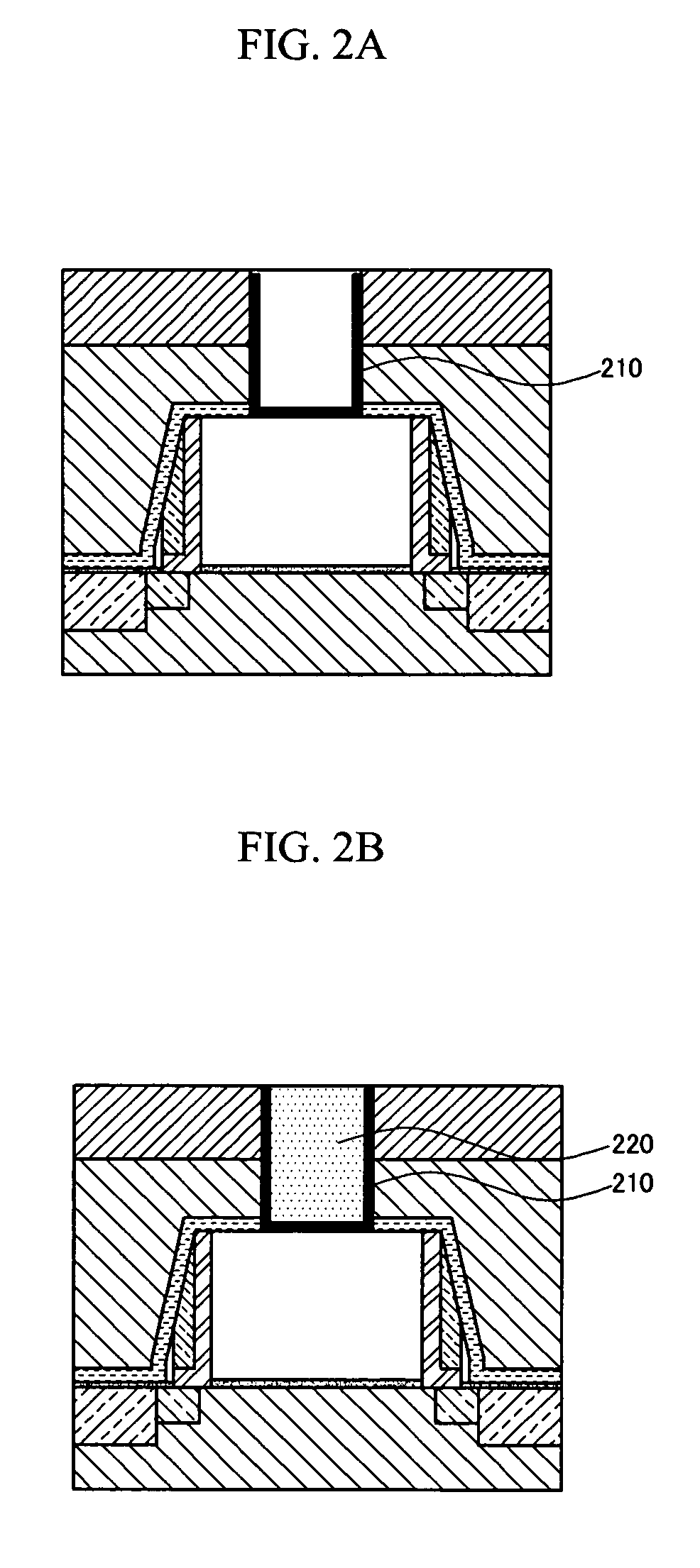Method for forming an aluminum contact
a technology of aluminum contact and aluminum film, which is applied in the direction of semiconductor devices, semiconductor device details, electrical equipment, etc., can solve the problems of difficult forming of metal contacts, cvd may have abnormal growth characteristics in thick aluminum films, and may fail, so as to prevent junction breakdown and reduce resistance , the effect of rapid thermal process
- Summary
- Abstract
- Description
- Claims
- Application Information
AI Technical Summary
Benefits of technology
Problems solved by technology
Method used
Image
Examples
Embodiment Construction
[0027] An exemplary embodiment of the present invention will hereinafter be described in detail with reference to the accompanying drawings.
[0028]FIG. 2A to FIG. 2D are cross-sectional views showing principal stages of forming an aluminum contact according to an exemplary embodiment of the present invention.
[0029] First, as shown in FIG. 2A, a barrier metal layer 210 is formed on the interlayer insulation layer pattern defining a contact hole so as to form an aluminum layer only in a contact hole. The barrier metal layer 210 can be composed of titanium nitride (TiN), tantalum nitride (TaN), titanium aluminum nitride (TiAlN), titanium silicon nitride (TiSiN), tantalum aluminum nitride (TaAlN), tantalum silicon nitride (TaSiN), tungsten nitride (WN), or a combination thereof.
[0030] Subsequently, as shown in FIG. 2B, an aluminum layer 220 is formed on the barrier metal layer 210 by a CVD method so as to fill the contact hole. The aluminum metal layer 220 is planarized by using a che...
PUM
| Property | Measurement | Unit |
|---|---|---|
| width | aaaaa | aaaaa |
| thickness | aaaaa | aaaaa |
| aspect ratio | aaaaa | aaaaa |
Abstract
Description
Claims
Application Information
 Login to View More
Login to View More - R&D
- Intellectual Property
- Life Sciences
- Materials
- Tech Scout
- Unparalleled Data Quality
- Higher Quality Content
- 60% Fewer Hallucinations
Browse by: Latest US Patents, China's latest patents, Technical Efficacy Thesaurus, Application Domain, Technology Topic, Popular Technical Reports.
© 2025 PatSnap. All rights reserved.Legal|Privacy policy|Modern Slavery Act Transparency Statement|Sitemap|About US| Contact US: help@patsnap.com



